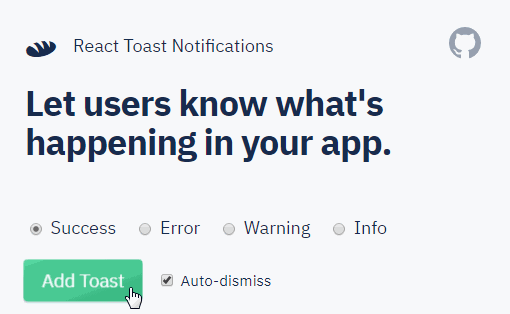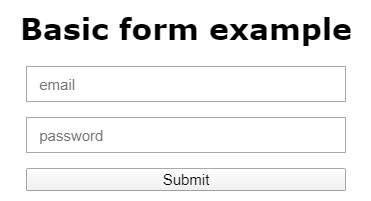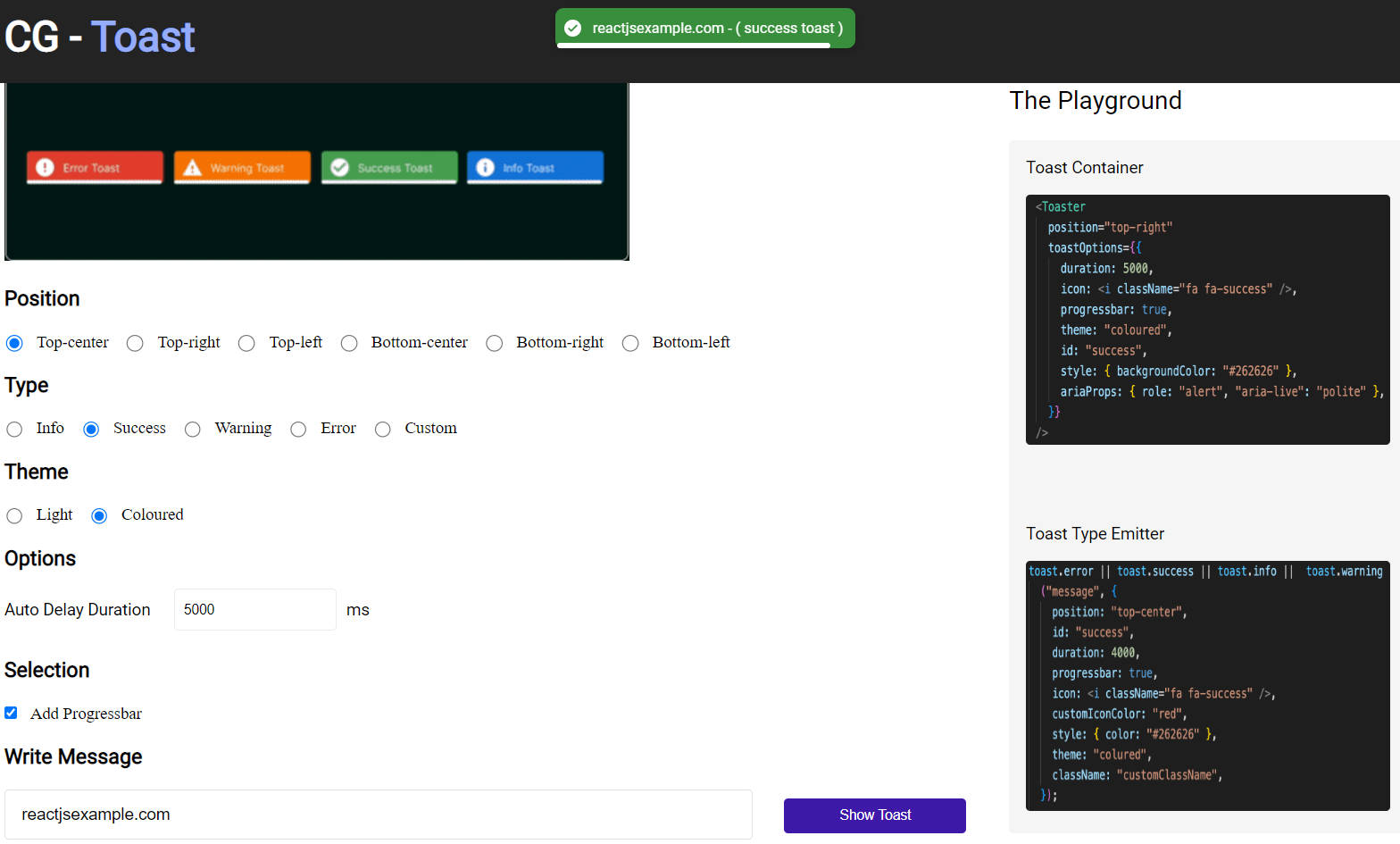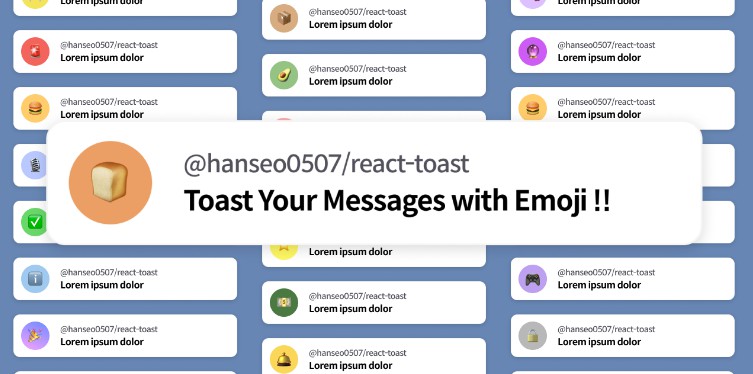React Toast Notifications
A configurable, composable, toast notification system for react.
Install
yarn add react-toast-notifications
Use
Wrap your app in the ToastProvider, which provides context for the Toast descendants.
import { ToastProvider, useToasts } from 'react-toast-notifications'
const FormWithToasts = () => {
const { addToast } = useToasts()
const onSubmit = async value => {
const { error } = await dataPersistenceLayer(value)
if (error) {
addToast(error.message, { appearance: 'error' })
} else {
addToast('Saved Successfully', { appearance: 'success' })
}
}
return <form onSubmit={onSubmit}>...</form>
}
const App = () => (
<ToastProvider>
<FormWithToasts />
</ToastProvider>
)
ToastProvider Props
For brevity:
PlacementTypeis equal to'bottom-left' | 'bottom-center' | 'bottom-right' | 'top-left' | 'top-center' | 'top-right'.TransitionStateis equal to'entering' | 'entered' | 'exiting' | 'exited'.
| Property | Description |
|---|---|
autoDismissTimeout number |
Default 5000. The time until a toast will be dismissed automatically, in milliseconds. |
children Node |
Required. Your app content. |
components { ToastContainer, Toast } |
Replace the underlying components. |
placement PlacementType |
Default top-right. Where, in relation to the viewport, to place the toasts. |
transitionDuration number |
Default 220. The duration of the CSS transition on the Toast component. |
Toast Props
| Property | Description |
|---|---|
| appearance | Required. One of success, error, warning, info |
| children | Required. The content of the toast notification. |
autoDismiss boolean |
Default: false. Whether or not to dismiss the toast automatically after a timeout. Inherited from ToastProvider if not provided. |
autoDismissTimeout number |
Inherited from ToastProvider. |
onDismiss: Id => void |
Passed in dynamically. |
placement PlacementType |
Inherited from ToastProvider. |
transitionDuration number |
Inherited from ToastProvider. |
transitionState: TransitionState |
Passed in dynamically. |
Hook
The useToast hook has the following signature:
const { addToast, removeToast, removeAllToasts, updateToast, toastStack } = useToasts();
The addToast method has three arguments:
- The first is the content of the toast, which can be any renderable
Node. - The second is the
Optionsobject, which can take any shape you like.Options.appearanceis required when using theDefaultToast. When departing from the default shape, you must provide an alternative, compliantToastcomponent. - The third is an optional callback, which is passed the added toast
ID.
The removeToast method has two arguments:
- The first is the
IDof the toast to remove. - The second is an optional callback.
The removeAllToasts method has no arguments.
The updateToast method has three arguments:
- The first is the
IDof the toast to update. - The second is the
Optionsobject, which differs slightly from the add method because it accepts acontentproperty. - The third is an optional callback, which is passed the updated toast
ID.
The toastStack is an array of objects representing the current toasts, e.g.
[
{ content: 'Something went wrong', id: 'generated-string', appearance: 'error' },
{ content: 'Item saved', id: 'generated-string', appearance: 'success' }
]
Replaceable Components
To bring each toast notification inline with your app, you can provide alternative components to the ToastProvider:
import { ToastProvider } from 'react-toast-notifications';
const MyCustomToast = ({ appearance, children }) => (
<div style={{ background: appearance === 'error' ? 'red' : 'green' }}>
{children}
</div>
);
const App = () => (
<ToastProvider components={{ Toast: MyCustomToast }}>...</ToastProvider>
);
To customize the existing component instead of creating a new one, you may import DefaultToast:
import { DefaultToast } from 'react-toast-notifications';
export const MyCustomToast = ({ children, ...props }) => (
<DefaultToast {...props}>
<SomethingSpecial>{children}</SomethingSpecial>
</DefaultToast>
);





